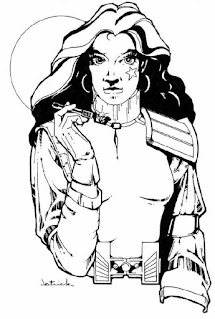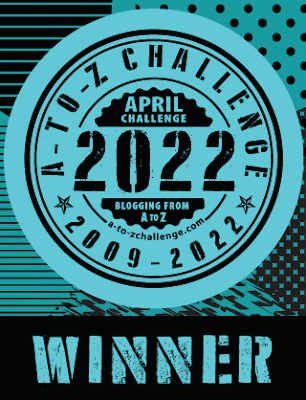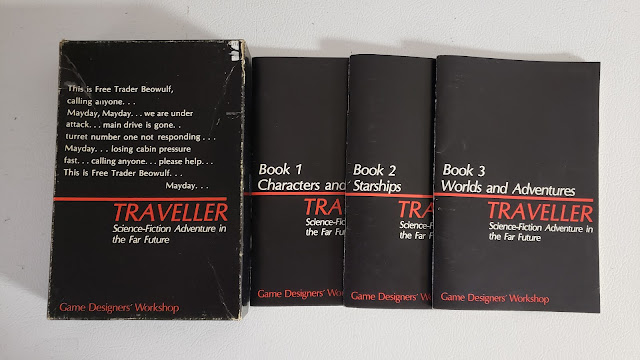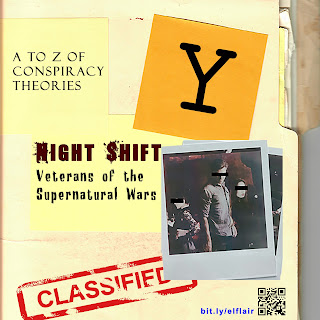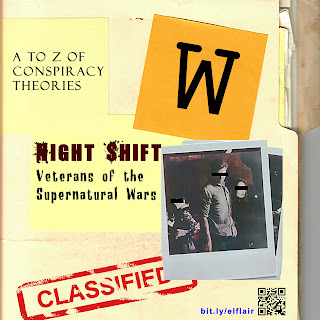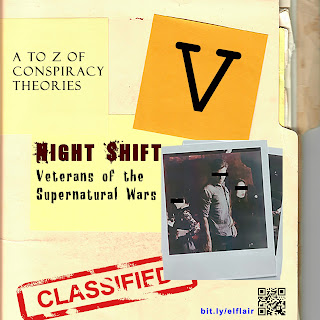An Almanac of Anomalies
 Metamorphosis Alpha: The Mutation Manual is a supplement designed for Metamorphosis Alpha: Fantastic Role-Playing Game of Science Fiction Adventures on a Lost Starship. The first Science Fiction roleplaying game and the first post-apocalypse roleplaying game, Metamorphosis Alpha is set aboard the Starship Warden, a generation spaceship which has suffered an unknown catastrophic event which killed the crew and most of the million or so colonists and left the ship irradiated and many of the survivors and the flora and fauna aboard mutated. Some three centuries later, as Humans, Mutated Humans, Mutated Animals, and Mutated Plants, the Player Characters, knowing nothing of their captive universe, would leave their village to explore strange realm around them, wielding fantastic mutant powers and discovering how to wield fantastic devices of the gods and the ancients that is technology, ultimately learn of their enclosed world. Originally published in 1976, it would go on to influence a whole genre of roleplaying games, starting with Gamma World, right down to Mutant Crawl Classics Roleplaying Game – Triumph & Technology Won by Mutants & Magic from Goodman Games. And it would be Goodman Games which brought the roleplaying game back with the stunning Metamorphosis Alpha Collector’s Edition in 2016, and support the forty-year old roleplaying game with a number of supplements, many which would be collected in the ‘Metamorphosis Alpha Treasure Chest’.
Metamorphosis Alpha: The Mutation Manual is a supplement designed for Metamorphosis Alpha: Fantastic Role-Playing Game of Science Fiction Adventures on a Lost Starship. The first Science Fiction roleplaying game and the first post-apocalypse roleplaying game, Metamorphosis Alpha is set aboard the Starship Warden, a generation spaceship which has suffered an unknown catastrophic event which killed the crew and most of the million or so colonists and left the ship irradiated and many of the survivors and the flora and fauna aboard mutated. Some three centuries later, as Humans, Mutated Humans, Mutated Animals, and Mutated Plants, the Player Characters, knowing nothing of their captive universe, would leave their village to explore strange realm around them, wielding fantastic mutant powers and discovering how to wield fantastic devices of the gods and the ancients that is technology, ultimately learn of their enclosed world. Originally published in 1976, it would go on to influence a whole genre of roleplaying games, starting with Gamma World, right down to Mutant Crawl Classics Roleplaying Game – Triumph & Technology Won by Mutants & Magic from Goodman Games. And it would be Goodman Games which brought the roleplaying game back with the stunning Metamorphosis Alpha Collector’s Edition in 2016, and support the forty-year old roleplaying game with a number of supplements, many which would be collected in the ‘Metamorphosis Alpha Treasure Chest’.Metamorphosis Alpha: The Mutation Manual is written by a variety of authors, including James M. Ward, the designer of Metamorphosis Alpha and simply gives descriptions of over two hundred mutations. Metamorphosis Alpha: The Mutation Manual is a character sourcebook divided between lists and descriptions. Both lists and descriptions are divided into six categories—physical mutations, physical defects, mental mutations, mental defects, plant mutations, and plant defects. There are more of the mutations than the defects in each category. So typically, there are eighty to ninety entries for the mutation categories and between two and twelve entries for the defects. They are joined by a full complete mutation list at the end of The Mutation Manual, which lists all of the mutations in the roleplaying. Neatly, this list references not just the entries in this supplement, but also all of the mutations and defects listed in Metamorphosis Alpha—both the original version published by TSR, Inc. in 1976 and the more recent edition published by Goodman Games in 2016. One of the features of Metamorphosis Alpha is that Player Characters do not intrinsically get better. They do not acquire Levels, improve their attributes, or increase their Hit Points through being rewarded Experience Points. Which begs the question, how does a Player Character improve himself? There are two main ways. One is to find better and often deadlier arms, armour, and equipment, the other is gain new mutations. Both are relatively easy to come across in play. There are always stores of forgotten or dropped gear to be found, and across the various decks of the Starship Warden are to be found sources of radiation and other mutagenic agents. So the former will equip a Player Character, whilst the latter will alter him, granting wondrous new powers and abilities. Of course, there comes a point when the equipment and mutation lists in Metamorphosis Alpha begins to feel a bit stale and over used. Fortunately, the contents of the ‘Metamorphosis Alpha Treasure Chest’ provide plenty of source material in terms of both—and thus plenty of other source material for other Post-Apocalyptic roleplaying games. Of course, Metamorphosis Alpha: The Mutation Manual adds the new and needed mutations.
So for the physical mutations, there is ‘Anaerobic’ which enables a mutant to breathe any gas bar oxygen, ‘Detonating Fingers’ with which a mutant can generate and miniature bomb blasts from his fingers, ‘Holographic Skin’ grants a low Armour Class and near invisibility when he is partially dressed, and ‘Physical Flinging Back’ which throws the effect of an attack back at the attacker. Some of the Physical Mutations have a superhero power feel to them, like ‘Duralloy Skeleton’ or ‘Metallic Skin’, but others odd, even bonkers, such as ‘Edible’ which makes the mutant’s body produce edible fruit or nuts which have special effects, such as pistachios which temporarily increase radiation resistance for imbiber or makes him a scientific genius for anything up to day. The mental muations include ‘Aerokinesis’ for control of the air currents all the way up to tornados and ‘Technology Amnesia’ for making a victim forget how to use a piece of technology, whilst ‘Total Healing’ enables to heal all damage once per every two days. Plant mutations include ‘Control Sap’ which renders anyone who touches the sap of the plant with this mutation suggestible and ‘Insect Monarch’ which marks the mutated plant out as both home and food source for a group of insects which the mutated plant can direct to do its bidding.
However, what is not immediately obvious is that Metamorphosis Alpha: The Mutation Manual does not contain any new defects. Instead, their inclusion—or at least mention—is confined to tables listing those available in Metamorphosis Alpha itself. Which is a shame as they are far and few between, and given the fact that any Player Character with mutations will also have defects, it means that whilst there will be a high degree of variation between mutations possessed by the Player Characters and NPCs, there will far less variation in terms of defects.
Physically, Metamorphosis Alpha: The Mutation Manual is cleanly presented. The illustrations are quirky—especially the one of E. Gary Gygax alongside that of his much-desired mental mutation of ‘Total Healing’—and in general, the entries are well written and easy to read. This is a supplement which will may of use to a lot of other Post-Apocalyptic settings or roleplaying games, such as Mutant Crawl Classics or Gamma World. Though for the former, the Judge will need to develop the respective mutation tables for each mutation incorporated from this supplement into her campaign. Overall, despite the lack of new defects, Metamorphosis Alpha: The Mutation Manual is a serviceable supplement for Metamorphosis Alpha: Fantastic Role-Playing Game of Science Fiction Adventures on a Lost Starship or the PostApocalyptic setting or roleplaying game of your choice.



